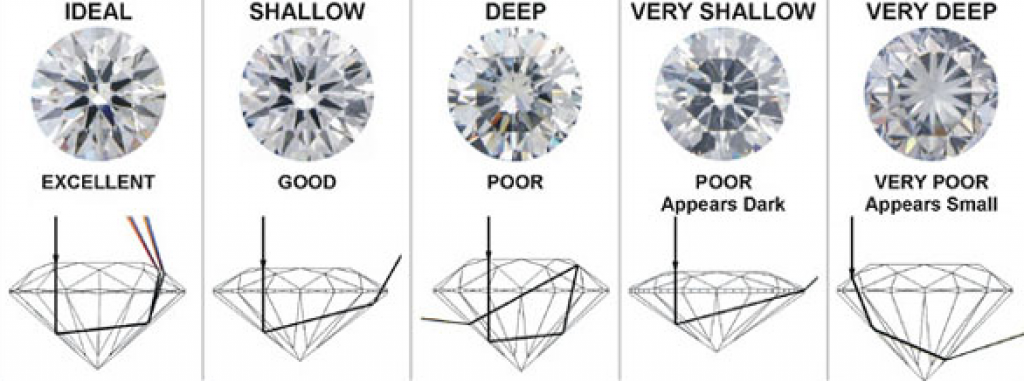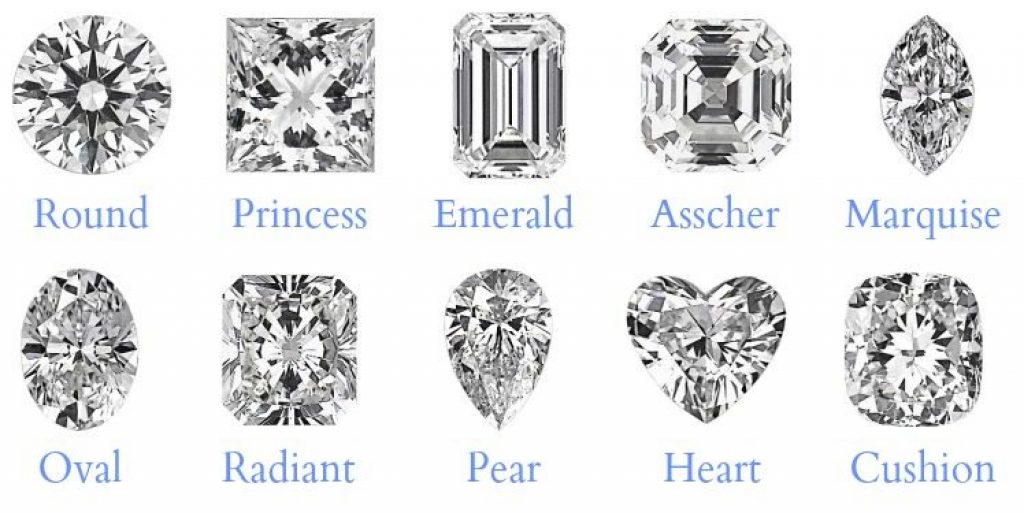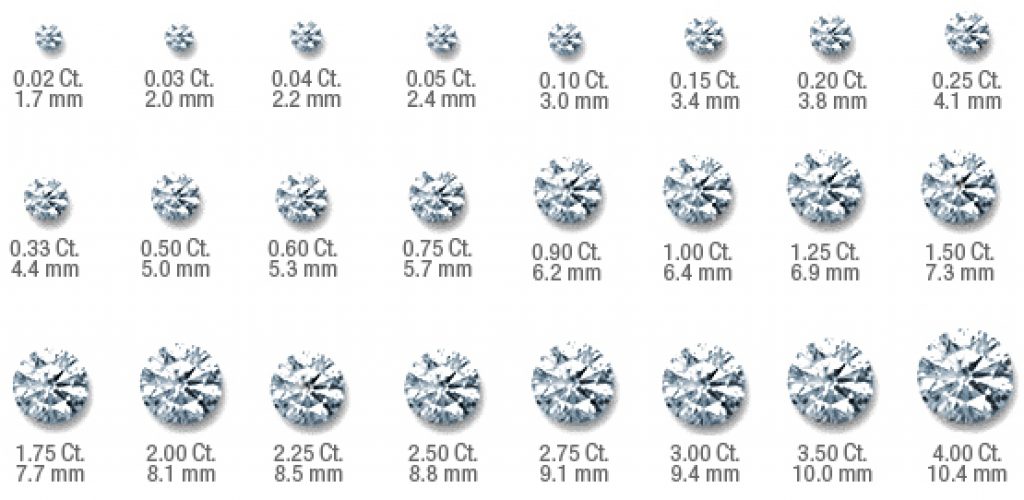Want to know all the ins and outs on how to buy a diamond ring? Makes sense, considering this will be one of the biggest purchases you make. So let’s dig into the first four crucial things you need to know in order to get the perfect diamond.
The price of a diamond is mostly based on its 4 C’s, which is just an easy-to-remember way of classifying diamonds. The 4 C’s are simply the diamond’s Cut, Color, Clarity, and Carat-Weight. Let’s go through the individual C’s in a little more detail.
A Diamond’s CUT
The cut of the diamond is possibly the most important quality and it has a little more to do with human craftsmanship than it does with nature.
A raw diamond is just that – an unpolished stone – and it takes a real artiste to cut and polish that diamond so that its angles are perfectly aligned to capture every ray of light.
A diamond that has been cut correctly will have angles that reflect the light that enters the diamond back up toward the top of the diamond. You can see this in the example below. See how the light is reflected back toward the surface? That results in that brilliant sparkle factor we all associate with diamonds.

If a diamond is not cut well, it loses the advantage of light – resulting in a lackluster diamond. In example #2, you can see what happens when a diamond is cut too shallow: the light that enters escapes out the side of the diamond. No reflection, less sparkle. The same thing happens in example #3, when a diamond is cut too deep: the light simply leaves without reflecting back toward the top, which also results in less sparkle.
The way a diamond is cut is the difference between a brilliantly sparkly diamond and a lackluster one. It determines the diamond’s brightness, the flash of rainbow colors that it throws out, and the intense glitters it shows when it moves.
As such, it can even be thought of as the most important of the 4 C’s. Watch closely for each individual diamond’s cut as you’re browsing selections. It makes a huge difference.
Note: The CUT of the diamond is often confused with SHAPE, which is what terms like ‘princess cut’ or ’emerald cut’ refer to.

This is important when it comes to choosing the perfect engagement ring but it is a topic for another post.
The second C in buying a diamond: COLOR
Did you know that diamonds actually come is all the colors of the rainbow? The majority of diamonds are not pure, colorless white. In fact, most have small traces of yellow and brown – which typically reduce their value. Some diamonds come in fancier colors such as pink or blue and are thus called “Fancies” in the industry. The “Fancies” tend to be prized for their unusual hue and that’s reflected in their higher prices.
The most valuable diamonds are the ones we typically think of when we think of diamonds: pure white, colorless, translucent stones. These colorless stones are rare – only about 8% of all the diamonds in the world – and are considered the best because their lack of color allows light to pass easily through the diamond.
The Gemological Institute of America (GIA) rates the color of these white diamonds from D (colorless) to Z (light yellow). The grades are based on the amount of yellow-ness that is visible when the diamond is viewed facedown through the pavilion on a white diamond color card using a daylight-equivalent flourescent light.
As you can see from the color grade chart below, each color grade is barely distinguishable from the next.

There is a very subtle, hard-to-spot difference between one grade to another, but that slight difference is not-so-slight when it comes to the price – a difference of a grade or two can translate to a few thousand dollars.
The third C in buying a diamond: CLARITY
Although not visible to the naked eye, when seen under magnification – most diamonds have tiny blemishes. Most diamonds have these flaws – known as “inclusions” simply because of the way diamonds are made.
As you might know, diamonds are the result of massive heat and pressure being placed on carbon crystals below the earth’s surface. At the time the diamonds are being formed, there might also be other minerals and crystals around and little bits of those can get trapped inside the diamond. Those tiny “inclusions” are kind of like diamond birthmarks, making each diamond unique and also determining the diamond’s CLARITY.
The clarity of a diamond is simply the number, location, size, and type of “inclusions” that a diamond has (or doesn’t have). The GIA rates clarity from Flawless to Internally Flawless to Imperfect 1, 2, & 3 (3 being the worst).
As a rule: the less inclusions a diamond has (i.e. flawless), the less interference with the light passing through the diamond.
Needless to say, flawless diamonds are the most valuable. They are the also the most rare…so the priciest as well.
The fourth C in buying a diamond: CARAT-WEIGHT
Carats simply refers to the weight of a diamond. And although size isn’t everything (the other C’s matter a lot too) – all things being equal, yes, bigger is better.

If two diamonds have similar cut, color, and clarity – the one with the higher CARAT-WEIGHT will be more valuable, and thus, more expensive. However, a huge diamond with average cut, color, and clarity will be worth less than a smaller diamond with an excellent cut, no color, and flawless clarity.